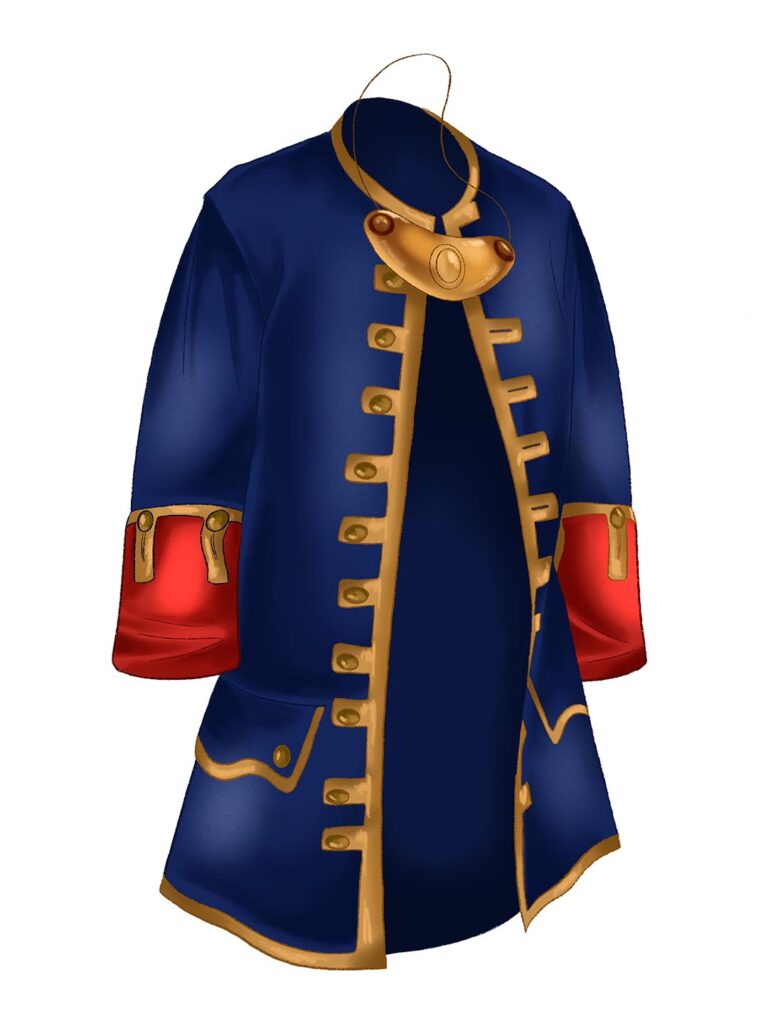Preserved in smoke and stone
Historians and volunteers keep the true history of a 459-year-old city alive
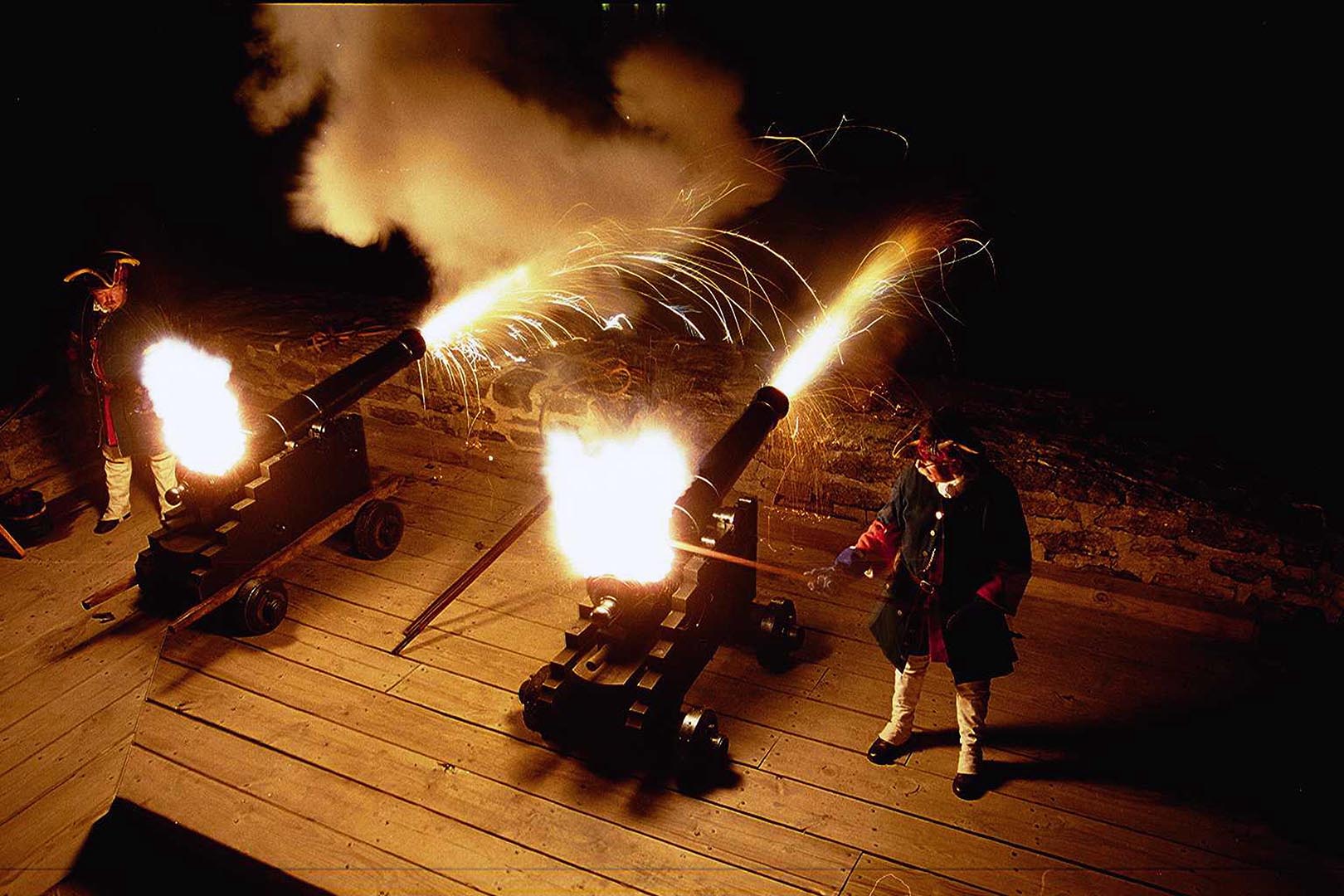
February 15, 2025 | story and illustrations by Delia Rose Sauer
photos courtesy of John Ciprani
This story is from Atrium’s Winter 2024 magazine, which released December 2024.
John Cipriani’s shoulders barely jump when the cannon finally goes off in a puff of smoke. The sound of its fire is familiar to the 82-year-old, who has the composure of a captain.
The iron cannon fits a 6-pound cannonball about the size of a baseball. As it begins to smoke, spectators cover their ears before the blast.
In the age of the Spanish militia, a soldado would use 3 pounds of gunpowder strong enough to make the cannonball reach the St. Augustine lighthouse, hazy in the distance. For the safety of downtown St. Augustine, modern-day soldado reenactors only use half a pound.
With the shout of “Fire!” the cannon explodes. The cannonball falls into the water as tourists cheer. It’s the first of four demonstrations on a cloudy Saturday morning.
The picturesque vision of St. Augustine is what draws visitors in. Horse-drawn carriages enchant tourists as the sound of clopping hooves echoes throughout downtown St. Augustine. The old houses and cobblestone roads eventually lead them to the Castillo de San Marcos, or Fort Marion, a 17th-century fort erected by the Spanish to protect the military colony.
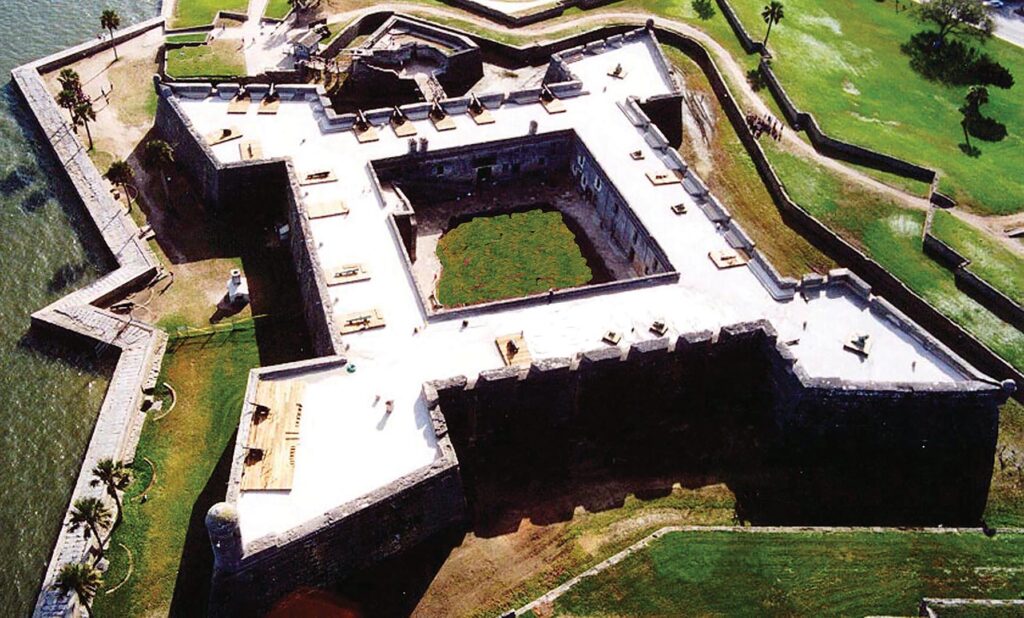
But tourists often miss out on St. Augustine’s rich, extensive history amid the old stones and wooden drawbridges.
Completed in 1695, the Castillo protected St. Augustine more effectively than the nine rotted, wooden forts built when the city was first founded in 1565. The Castillo is built of coquina, a type of sedimentary rock made up of layers of tiny shells strong enough to absorb the impact of cannonballs like a sponge. The walls gave the fortress its impenetrable reputation.
Now, visitors are advised not to lean on the heavily textured walls in case they deteriorate further.
During the 18th-century War of the Spanish Succession, the English destroyed St. Augustine, but the Castillo survived. It continues to persevere, preserving the history of Spanish colonial Florida within its corroding walls.
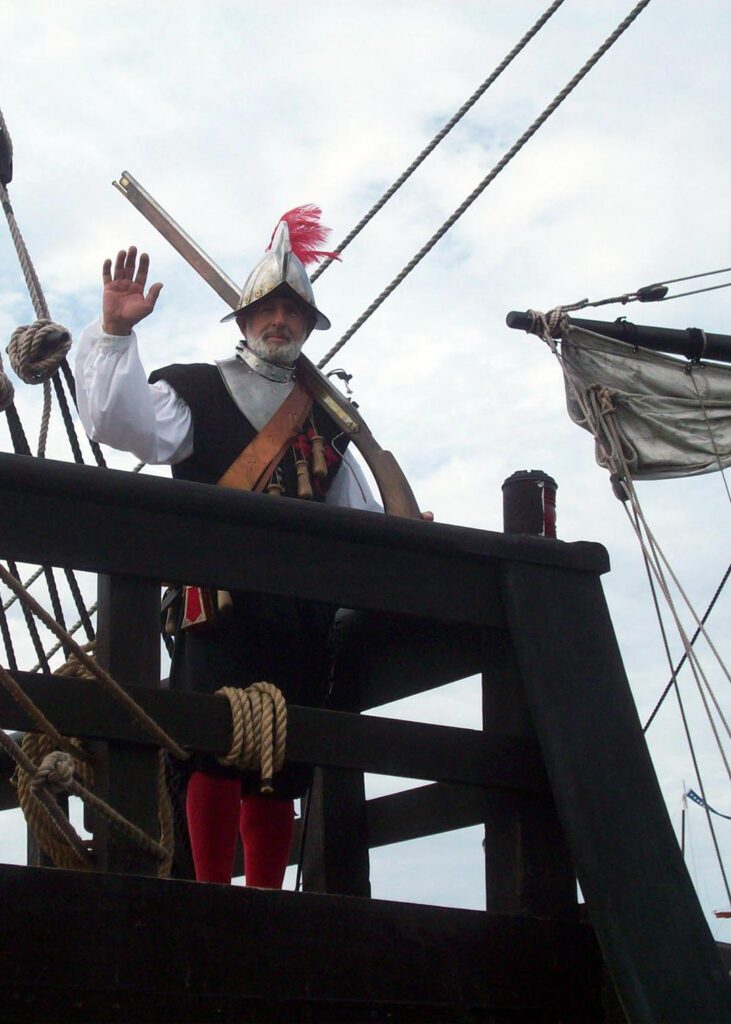
Cipriani has volunteered with the National Park Service for 28 years, spending three hours a day at the Castillo. During the week, he sports a khaki uniform. On the weekends, he looks like a man from another era, dressed in a Spanish captain’s uniform. His wool-lined blue coat and linen shirt make him stand out in a sea of sneakers and sunglasses.
“The best part is dressing up as a soldier and firing cannons and muskets,” Cipriani says with a smile.
Born and raised in Massachusetts, Cipriani wanted to escape the cold and landed in South Florida. He traveled to St. Augustine often, even visiting during his honeymoon when admission for the fort cost around 25 or 50 cents.
He remembers sitting close to a fire in the fort’s guardroom on a rainy day. He wondered what it would’ve been like to be a Spanish soldier, and now, that’s exactly who he is.
Cipriani looks like a character from a picture book to the children who marvel at him. Their parents urge them to approach the stern-looking captain, and a lucky few receive a doubloon from him. The golden coin has rough edges and stamped impressions of Spanish monarchs Ferdinand and Isabella. The children inspect it thoroughly.
The child who receives a doubloon is now part of the Spanish army for the rest of eternity, Cipiani jokes.
Some visitors stay for 10 to 15 minutes. But in their rush, they miss engravings of colonists from the American Revolution and Seminole, Cheyenne, Apache and other Indigenous prisoners. Captivated by the powerful iron cannons, they ignore the faded Spanish coat of arms painted onto the walls of the Castillo.
Cipriani likes the visitors who spend hours in the fort. “They have all kinds of good questions,” he says.
He volunteers to help educate others, especially children, because he worries that people are either learning incorrect information about the city or no information at all.
“All you can do is hope you can give them the right information about the real history,” he says, “and let that blend over into the touristy history.”
Tourists walk past Flagler College, a private university in the heart of downtown, and see sunset-orange rooftops and oxidized copper fountains. Tour guides describe how the ornate university building was originally the Hotel Ponce de León, a luxury resort built in 1888.
Visitors may not learn that the walls and towers belong to the nation’s first major poured-in-place concrete building. While tourists line up outside and fan themselves in the sweltering Florida heat, they’re also stepping foot into one of the first electrified buildings in the U.S.
With the kiss of the Matanzas River breeze, it’s easy to focus on the city’s beauty and overlook the reminders of colonial control. But to understand St. Augustine, visitors must explore a history deeper than tourist pamphlets and ghost tours.
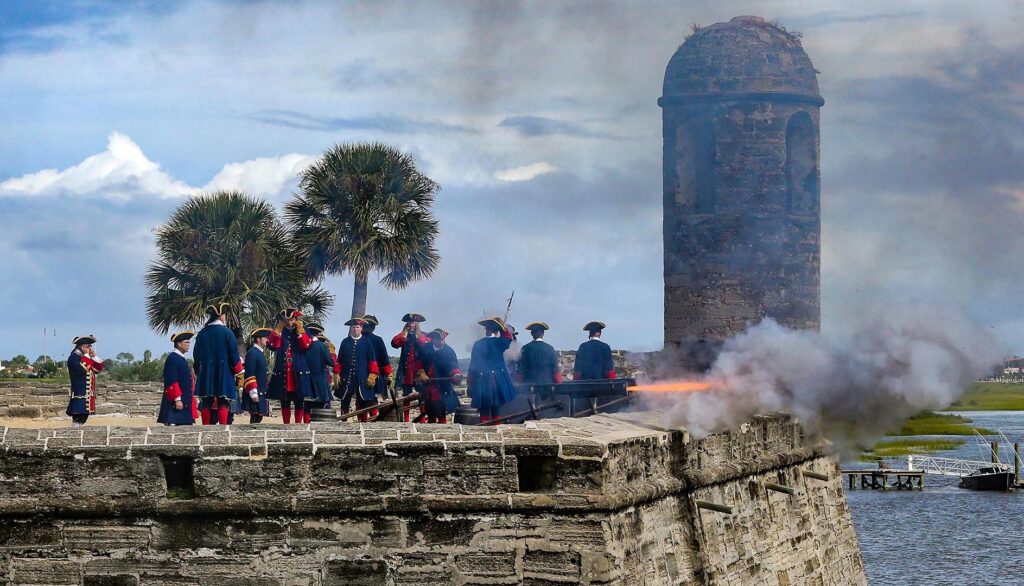
Many tourists visit the Castillo de San Marcos, for example, unaware that the city was home to a second fort on its northern border, Fort Mose, or the Gracia Real de Santa Teresa de Mose. Past the arch called the “Walkway to Freedom,” the site is a haven surrounded by buzzing mosquitoes, towering trees and swamps — a reminder of the sanctuary it once was. In 1738, it was the first legally sanctioned free Black settlement in the country.
Before the fort was abandoned and lost to the marshes, it was the home to a free Black militia led by former slave Captain Francisco Menéndez. In the face of enslavement by the British, the community of Fort Mose was forced to flee to Cuba.
Now, Fort Mose is a National Historic Landmark and part of Florida’s Black Heritage Trail.
To ensure the stories of the oldest city in the country aren’t lost, historian Charles Tingley does what he can. Tingley, 72, began visiting St. Augustine when he was a young child. Back then, the tour guides for the Oldest House Museum Complex and Gardens — the oldest dwelling in St. Augustine that acts as the site of the St. Augustine Historical Society — dressed in “somebody’s vision of what a Spanish woman should look like,” Tingley recalls. Black lace veils made them look like witches to 4-year-old Tingley.
Now he works as the research historian at the Oldest House. He began volunteering after 1978 and was hired as a librarian in 1994.
In 2000, Tingley was approached by a sculptor who wanted to create a sculpture of her great-grandfather, Confederate General Edmund Kirby Smith, for the Historical Society’s research library garden, located in his childhood home.
She also made a sculpture for someone she referred to as Alex for the garden. Tingley had no idea who this “Alex” was, so he dove headfirst into exploring why he was also getting a statue.
Alex was Edmund Kirby Smith’s enslaved manservant. After his emancipation, he became Alexander H. Darnes, M.D., the first Black physician in Jacksonville. He battled in court for his right to vote in 1875 and helped during the smallpox epidemic and yellow fever epidemics in the 1880s in Jacksonville.
Tingley says Darnes was an invisible man. His achievements were written out of history books, barely even mentioned in footnotes. Tingley, who wrote a comprehensive article on Darnes’ life, deems it one of his greatest research projects, as it gave him a chance to bring light to a monumental figure in Florida’s history.
While tourists flock to see places like the Castillo, tourist traps open up to benefit from the already booming industry, pushing St. Augustine’s true history aside.
Tingley describes the local tourism industry as a remora fish: “They’re feeding on the scraps,” he says.
Places like the now-defunct Tragedy in U.S. History Museum, which included morbid curiosities such as Lee Harvey Oswald’s bedroom furniture, took advantage of the tourist economy while having nothing to do with St. Augustine.
St. Augustine has changed significantly in Tingley’s lifetime. It’s gone from “being a small Southern town to being a tourist mecca,” he says. But now, there is more of an effort to keep all of its history accessible — the good, the bad and the ugly.
“If you’ve gone to the Fountain of Youth 30 years ago,” Tingley says, “you wouldn’t recognize what’s in there now.” The park, home to a spring rumored to have the secret to immortality, now has more exhibits centering on the Timucua people indigenous to North Florida. It reminds visitors that the land they’re on — the village of Chief Seloy — belonged to the Timucua, the soil of their livelihoods and culture.
The Castillo has invited speakers from the Cheyenne and Arapaho Tribes to share the stories of Indigenous prisoners held at the fort. Over 230 Seminoles who refused to abandon their homeland in the face of the Indian Removal Act were imprisoned in 1837. Cheyenne, Kiowa, Comanche, Arapaho and Caddo warriors were incarcerated from 1875 to 1878 after American settlers forced them into confinement after the Red River War.
The people who work at the Castillo de San Marcos are doing all they can to push St. Augustine’s real history into the limelight. Cipriani learns something new from other park rangers every day, who in turn learn from living descendants and activists who challenge one-sided histories.
Every weekend, Cipriani dons his captain’s coat and calls cannon drills to keep the real story of St. Augustine alive.
And, in doing so, he says he refers back to an old saying: “If you don’t know your history, you’ll repeat it.”
